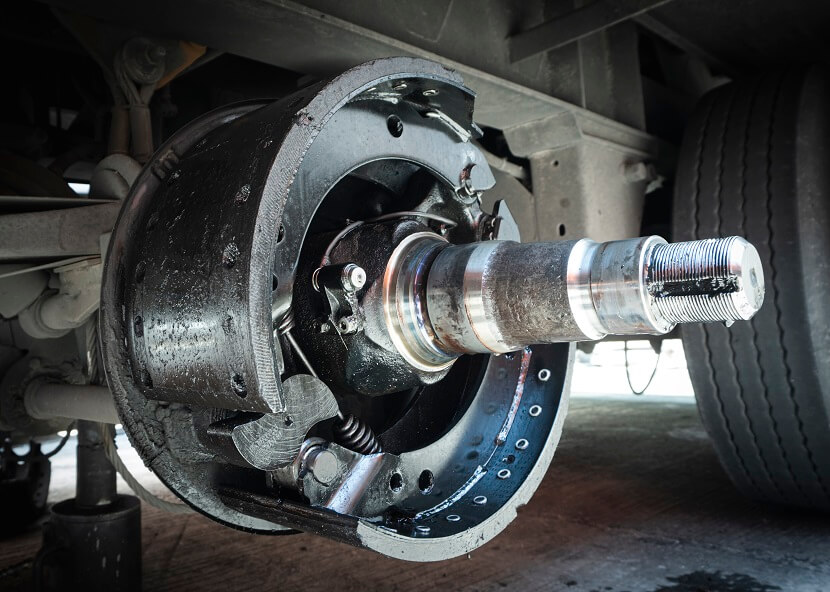
Why It Pays to Take a Break for Brakes
Imagine it’s a hot summer afternoon, and you hear a squeal in the brakes of a truck. It grabs your attention for a second but not long enough to take your attention away from the next several items you already had on your plate to make sure your fleet and office run efficiently.
You refrain from looking into the tractor’s brake condition because you’ve heard the same noise hundreds, even thousands of times over your career as a fleet manager. If there was an issue, someone would have raised it, right?
Now, also think about a time when your fleet might need a less experienced driver to haul on some mountain routes. He or she may be inclined to overuse the brakes on a downhill road without being acquainted with the grade that lies ahead. If the brakes aren’t in good condition, the best-case scenario may be a close call or a ride into a runaway truck ramp. Less optimal outcomes could be catastrophic.
And even if you’ve got accomplished drivers at the wheel, brakes that aren’t well-maintained could still produce an awful incident during a pileup that’s not initially the driver’s fault.
The potential consequences of a brake issue make it worth a fleet’s while to spend the money to maintain a truck’s brake system, even if it means not using a truck until it gets a brake tune-up. Carriers that take a lax approach on brakes may have the choice taken out of their hands later in the summer, thanks to an inspection program conducted by the Commercial Vehicle Safety Alliance (CVSA) that sidelines commercial vehicles with brake-related out-of-service violations.
What to know about Brake Safety Week 2025
From August 24-30, CVSA-certified inspectors throughout the U.S., Canada, and Mexico will be conducting inspections on brake components and systems for this year’s Brake Safety Week.
According to the CVSA, Brake Safety Week “aims to improve commercial motor vehicle brake safety throughout North America. The goal is to eliminate roadway crashes by conducting roadside inspections and educating drivers, mechanics, large- and small-fleet motor carriers, owner-operators, and others on the importance of proper brake inspection, maintenance and operation.”

Similar to International Roadcheck, each edition of Brake Safety Week features a focus area that inspectors will pay special attention to. This year’s area of emphasis is on drums and rotors, while last year’s was brake linings and pads.
If you have trucks that you know haven’t received a brake system inspection in a while or have doubts about whether some will pass the inspection currently, don’t fret. The CVSA has several resources you can consult, including:
- The brake inspection procedure used by CVSA-sanctioned inspectors
- A brake inspection checklist to perform your own inspections
- A downloadable flyer about drums and rotors as this year’s Brake Safety Week focus area
- Information and a brochure about Performance-Based Brake Testers (PBBT), machines that determine braking performance of a vehicle and will be used in come Brake Safety Week inspections.
- FAQs on brake systems and inspections.
- Resources for drivers and mechanics on the importance of brake inspections and maintenance.
This year’s brake blitz and 2024 Brake Safety Week results
Brake Safety Week is part of CVSA’s Operation Airbrake, which also includes an unannounced, one-day brake safety inspection blitz. This one-day event for 2025 took place on April 22, with 398 vehicles taken out of service out of 4,569 total commercial motor vehicle inspections, for an 8.7% out-of-service rate.
During this event, the most common out-of-service violation was the 20% defective brakes violation, where 20% or more of a vehicle’s brakes have an out-of-service condition. With 237 of 398 OOS violations during the blitz, the 20% defective violation made up almost 60% of the overall OOS total.
The out-of-service rate from the 2025 brake inspection blitz represents both an improvement over the 12.8% out-of-service rate from Brake Safety Week 2024 and 11.6% from the unannounced brake safety day on April 30, 2024.
Telematics can help you manage brakes in between inspections
By employing telematics solutions, your fleet can take advantage of customized solutions built specifically for your carrier and its drivers.
For example, a fleet could set up preventive maintenance alerts to perform a new brake inspection after a certain number of days, miles, or trips. It could also create a rule to keep tabs on every significant hard braking event a driver and truck go through. If paired with video telematics like in-cab and outward-facing dash cams, a carrier can also use this braking data for driver coaching. Depending on your brake system or manufacturer, you may be able to monitor pad and lining wear through telematics, too.
TL;DR
Brake maintenance is critical for fleet safety and compliance, but many carriers neglect it until it’s too late. CVSA’s Brake Safety Week will focus on brake inspections. Proactive solutions include using CVSA’s brake inspection resources and implementing telematics systems that monitor brake performance, track hard braking events, and set preventive maintenance alerts to catch issues before they become safety hazards or compliance violations.



